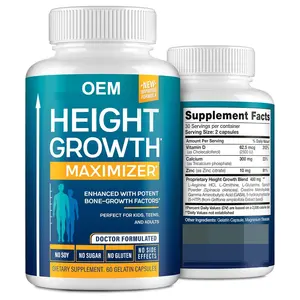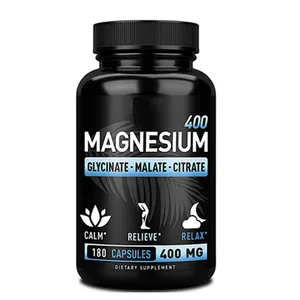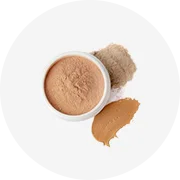ได้รับความนิยมในอุตสาหกรรมของคุณ


ปรับแต่งขนาดใหญ่อะคริลิคตู้ปลาถังคริสตัลเหล็กต่ําสีขาวพิเศษแก้วใสตู้ปลาเกลือถังตู้ปลาน้ํา
฿370.35 - ฿555.53
การสั่งซื้อขั้นต่ำ: 200 กิโลกรัม






ตะกรันน้ําเค็มปลาดาวแดงตู้ปลาตู้ปลาอะคริลิคตู้ปลา Sump สําหรับการกรองตู้ปลา
฿5,184.88 - ฿14,073.24
การสั่งซื้อขั้นต่ำ: 2 ชิ้น


ตู้ปลาแก้วสีขาวพร้อมตู้กรองตู้ปลาขนาดใหญ่ใช้ในสำนักงาน
฿29,627.88 - ฿30,368.57
การสั่งซื้อขั้นต่ำ: 10 ชิ้น
การจัดส่งต่อชิ้น: ฿5,607.82







WEEK AQUA RGB + UVA พิพิธภัณฑ์สัตว์น้ําไฟ LED โคมไฟตู้ปลาไฟปะการังทะเลพร้อมการควบคุมแอพ
พร้อมส่ง
฿1,107.35 - ฿11,188.23
การสั่งซื้อขั้นต่ำ: 2 ชิ้น
การจัดส่งต่อชิ้น: ฿1,578.43







อัลตร้าล้างแก้วมินิเกลือน้ำทะเลพิพิธภัณฑ์สัตว์น้ำปลาถังสำหรับทะเล
฿777.00 - ฿966.61
การสั่งซื้อขั้นต่ำ: 2 ชิ้น
การจัดส่งต่อชิ้น: ฿2,756.14


















ใหม่ถังน้ํามันเชื้อเพลิงแบบพกพา 6.3Gallon สําหรับ Yamaha Marine ถังน้ํามันเชื้อเพลิงนอกเรือ W/ขั้วต่อ
พร้อมส่ง
฿888.84 - ฿1,074.02
การสั่งซื้อขั้นต่ำ: 1 ชุด
การจัดส่งต่อชิ้น: ฿1,999.89






โรงงาน OEM Roto Moulding ถังน้ํามันแม่พิมพ์ทางทะเลหมุนแม่พิมพ์ถังเก็บน้ํามันเชื้อเพลิงเรือดีเซล Rotomolding ถังเชื้อเพลิงพลาสติก
฿1,625.46 - ฿1,703.24
การสั่งซื้อขั้นต่ำ: 50 ชิ้น
การจัดส่งต่อชิ้น: ฿1,320.67






ถังเพาะเลี้ยงสัตว์น้ำ Ras,พลาสติกไฟเบอร์กลาสขนาดใหญ่
฿6,629.24 - ฿13,295.51
การสั่งซื้อขั้นต่ำ: 2 ชิ้น






OEM ที่กําหนดเองอะคริลิหรือแก้วตู้ปลาตู้ปลากลับตัวกรอง skimmer ตกแต่งตารางตู้ปลาน้ําเค็มถังทะเลสําหรับบ้าน
฿6,851.45 - ฿7,369.94
การสั่งซื้อขั้นต่ำ: 10 ชิ้น
การจัดส่งต่อชิ้น: ฿2,052.11






ตู้ปลาอะคริลิกขนาดใหญ่สำหรับใช้ในบ้านตู้ปลาแกลลอน200ขนาดใหญ่สำหรับใช้ในบ้าน
฿14,073.24 - ฿44,441.81
การสั่งซื้อขั้นต่ำ: 2 ชิ้น

M80พิพิธภัณฑ์สัตว์น้ำคริลิคโปรตีน Skimmer สำหรับพิพิธภัณฑ์สัตว์น้ำถังทางทะเล
พร้อมส่ง
฿1,481.40 - ฿1,666.57
การสั่งซื้อขั้นต่ำ: 4 ชิ้น
การจัดส่งต่อชิ้น: ฿359.24





factory supply OEM ODM offered Flow Adjustable Aquarium Pump with Ceramic/stainless Shaft for marine tank stock available
พร้อมส่ง
฿240.73 - ฿259.25
การสั่งซื้อขั้นต่ำ: 16 หน่วย
การจัดส่งต่อชิ้น: ฿115.18






SOBO Aqua ปั๊มออกซิเจนในตู้ปลา,พร้อมถังน้ำทะเลพร้อมช่องระบาย4ช่อง
฿274.06 - ฿296.28
การสั่งซื้อขั้นต่ำ: 16 ชิ้น






เครื่องยนต์นอกเรือทางทะเลถังน้ำมันเชื้อเพลิงภายนอก12L พร้อมท่อน้ำมันเชื้อเพลิง
฿1,703.61 - ฿1,851.75
การสั่งซื้อขั้นต่ำ: 5 ชิ้น






GAKO A052 52วัตต์พระอาทิตย์ขึ้นพระอาทิตย์ตกจำลองพิพิธภัณฑ์สัตว์น้ำโปรแกรมไฟ Led สำหรับทะเลพิพิธภัณฑ์สัตว์น้ำปลาถัง
พร้อมส่ง
฿2,148.03 - ฿2,407.27
การสั่งซื้อขั้นต่ำ: 10 ชิ้น
การจัดส่งต่อชิ้น: ฿175.92






OneCove บ่อปลาน้ำเค็มอะคริลิคขนาดใหญ่,สำหรับตู้ปลานาโนและแนวปะการัง
฿7,369.94
การสั่งซื้อขั้นต่ำ: 5 ชิ้น


การหมุนปั้น XL PE ถังน้ำมันเชื้อเพลิงทางทะเลเรือยอชท์ถังน้ำมันเชื้อเพลิง
฿1,111.05 - ฿2,592.44
การสั่งซื้อขั้นต่ำ: 50 ชุด






24L เรือทางทะเลมอเตอร์ถังน้ำมันเชื้อเพลิงสำหรับ15HP เครื่องยนต์นอกเรือ
฿1,111.05 - ฿1,851.75
การสั่งซื้อขั้นต่ำ: 20 ชิ้น






ร้อนขายพิพิธภัณฑ์สัตว์น้ำทะเลใยแก้วคริสตัลปลาถังที่มีราคาต่ำ
พร้อมส่ง
฿518.49 - ฿740.70
การสั่งซื้อขั้นต่ำ: 5 ชิ้น
การจัดส่งต่อชิ้น: ฿2,459.12





ถังน้ำมันเชื้อเพลิงเรือทะเลแบบพกพา,ถังเก็บน้ำมันเชื้อเพลิง HDPE พลาสติกพร้อมมาตรวัดน้ำมันเบนซิน
฿1,666.20 - ฿2,777.25
การสั่งซื้อขั้นต่ำ: 1 ชิ้น



การแข่งขันราคาทะเลพิพิธภัณฑ์สัตว์น้ำปลาถังที่มีตู้สำหรับตกแต่งบ้าน
฿1,851.75 - ฿7,406.97
การสั่งซื้อขั้นต่ำ: 50 ชิ้น





ถังน้ำมันเชื้อเพลิง24L12L เรือเดินสมุทรเครื่องยนต์ถังน้ำมันสำหรับเรือยอร์ช
พร้อมส่ง
฿1,185.12
การสั่งซื้อขั้นต่ำ: 10 ชิ้น
การจัดส่งต่อชิ้น: ฿391.46




TIANRUN ตู้ปลาทะเลเป็นมิตรกับสิ่งแวดล้อม,ขายส่งตู้ปลาสำหรับปลาอาโรวาน่าสีแดง
฿8,518.02 - ฿22,220.91
การสั่งซื้อขั้นต่ำ: 5 ชิ้น






ตู้ปลาขนาดเล็ก,ตู้ปลาตั้งโต๊ะอะคริลิคตู้ปลาสัตว์น้ำ
฿55.19 - ฿66.30
การสั่งซื้อขั้นต่ำ: 100 ชิ้น
การจัดส่งต่อชิ้น: ฿25.19









พิพิธภัณฑ์สัตว์น้ำแก้วถังปลาทะเล/พิพิธภัณฑ์สัตว์น้ำถังแก้วสำหรับน้ำทะเล
฿3,888.66 - ฿6,110.75
การสั่งซื้อขั้นต่ำ: 100 ชุด

มาแรง! 12L 24L MARINE Outboard เครื่องยนต์การใช้ถังสำหรับเรือ,เรือยอชท์
฿740.70 - ฿925.88
การสั่งซื้อขั้นต่ำ: 1 ชิ้น






Seabillion 3000L /H พิพิธภัณฑ์สัตว์น้ำจุ่มน้ำพุบ่อทะเลปั๊มน้ำถังปลา
฿299.99 - ฿318.50
การสั่งซื้อขั้นต่ำ: 200 ชิ้น






SEAFLO 20L มือถือทางทะเลแบบพกพาถังน้ำมันเชื้อเพลิงสำหรับรถจักรยานยนต์
฿510.72 - ฿851.44
การสั่งซื้อขั้นต่ำ: 1 ชิ้น






แผ่นอะคริลิคเรซิ่นบริสุทธิ์,ตู้ปลาและอุปกรณ์เสริมแนวปะการังใสตู้ปลาทะเลปรับแต่งขนาด20-600มม.
฿185.18 - ฿444.42
การสั่งซื้อขั้นต่ำ: 300 กิโลกรัม
















ถังเลี้ยงปลาทะเล,ถังเก็บปลาไฟเบอร์กลาส Frp ถังเก็บปลาสำหรับตู้ปลาแบบกำหนดเองเหนือพื้นดิน
฿2,962.79 - ฿29,627.88
การสั่งซื้อขั้นต่ำ: 1 ชุด






Jebao ปั๊มหมุนเวียนแบบเวฟเครื่องสร้างคลื่น,ปั๊มหมุนเวียนน้ำสำหรับตู้ปลาแนวปะการังทะเล
฿1,848.04 - ฿4,440.48
การสั่งซื้อขั้นต่ำ: 2 ชิ้น
หมวดหมู่ยอดนิยม
เกี่ยวกับ รถถังทางทะเล
รถถังทางทะเล ไม่ใช่เรื่องใหม่สำหรับคนทั่วไปในปัจจุบันและไม่ถือว่าเป็นสิ่งต้องห้ามอีกต่อไป หากคุณกำลังมองหาความสุขสุดท้ายนี้คุณต้องตรวจสอบความยิ่งใหญ่ คอลเลกชัน รถถังทางทะเล ที่ Alibaba.com เหล่านี้ยั่วยวนและโค้ง รถถังทางทะเล คุ้มค่ากับเงินทุกบาทและมั่นใจว่าจะทำให้ค่ำคืนนี้พิเศษสำหรับคุณ ตุ๊กตาเหล่านี้มีลักษณะเหมือนจริงตั้งแต่ขนไปจนถึงปลายเท้าในทุกแง่มุม
ไม่ว่าคุณจะเป็นคนขี้เหงาที่กำลังมองหาคู่ชีวิตที่เหมือนมีชีวิตหรือคู่รักที่ต้องการเติมชีวิตชีวาให้กับชีวิตคุณสามารถใช้สิ่งเหล่านี้ได้ . รถถังทางทะเล สำหรับจุดไฟนั้น ที่งดงามเหล่านี้ รถถังทางทะเล สามารถปรับแต่งได้ตามความคาดหวังของคุณ น่าทึ่งเหล่านี้ รถถังทางทะเล มีให้เลือกทั้งชายและหญิงและทำจากซิลิโคนเกรดยาเพื่อความปลอดภัยในการใช้งาน รับตอนนี้และเพลิดเพลินไปกับค่ำคืนแห่งความหลงใหลและไฟ
Alibaba.com ขอเสนอสิ่งที่น่าทึ่งเหล่านี้ รถถังทางทะเล ในทุกรูปร่างขนาดและชาติพันธุ์ ไม่ว่าความต้องการของคุณสำหรับไฟล์. รถถังทางทะเล คุณสามารถหาได้ทั้งหมดบนไซต์ เหล่านี้ รถถังทางทะเล ได้รับการขึ้นรูปโดยช่างฝีมือที่ดีที่สุดและทุกรายละเอียดที่ซับซ้อนจะได้รับการตรวจสอบอย่างละเอียด ตุ๊กตาเหล่านี้มีดวงตาผมเล็บและส่วนอื่น ๆ ของร่างกายคล้ายกับคนในชีวิตจริง
Alibaba.com ให้บริการที่หลากหลาย รถถังทางทะเล ที่สามารถช่วยคุณซื้อผลิตภัณฑ์ที่เหมาะสมกับงบประมาณของคุณและข้อกำหนดอื่น ๆ ผลิตภัณฑ์เหล่านี้ปลอดภัยต่อการใช้งานได้รับการรับรองและเป็นมิตรกับสิ่งแวดล้อม มีคำสั่งซื้อ OEM สำหรับผลิตภัณฑ์เหล่านี้
ไม่ว่าคุณจะเป็นคนขี้เหงาที่กำลังมองหาคู่ชีวิตที่เหมือนมีชีวิตหรือคู่รักที่ต้องการเติมชีวิตชีวาให้กับชีวิตคุณสามารถใช้สิ่งเหล่านี้ได้ . รถถังทางทะเล สำหรับจุดไฟนั้น ที่งดงามเหล่านี้ รถถังทางทะเล สามารถปรับแต่งได้ตามความคาดหวังของคุณ น่าทึ่งเหล่านี้ รถถังทางทะเล มีให้เลือกทั้งชายและหญิงและทำจากซิลิโคนเกรดยาเพื่อความปลอดภัยในการใช้งาน รับตอนนี้และเพลิดเพลินไปกับค่ำคืนแห่งความหลงใหลและไฟ
Alibaba.com ขอเสนอสิ่งที่น่าทึ่งเหล่านี้ รถถังทางทะเล ในทุกรูปร่างขนาดและชาติพันธุ์ ไม่ว่าความต้องการของคุณสำหรับไฟล์. รถถังทางทะเล คุณสามารถหาได้ทั้งหมดบนไซต์ เหล่านี้ รถถังทางทะเล ได้รับการขึ้นรูปโดยช่างฝีมือที่ดีที่สุดและทุกรายละเอียดที่ซับซ้อนจะได้รับการตรวจสอบอย่างละเอียด ตุ๊กตาเหล่านี้มีดวงตาผมเล็บและส่วนอื่น ๆ ของร่างกายคล้ายกับคนในชีวิตจริง
Alibaba.com ให้บริการที่หลากหลาย รถถังทางทะเล ที่สามารถช่วยคุณซื้อผลิตภัณฑ์ที่เหมาะสมกับงบประมาณของคุณและข้อกำหนดอื่น ๆ ผลิตภัณฑ์เหล่านี้ปลอดภัยต่อการใช้งานได้รับการรับรองและเป็นมิตรกับสิ่งแวดล้อม มีคำสั่งซื้อ OEM สำหรับผลิตภัณฑ์เหล่านี้






























